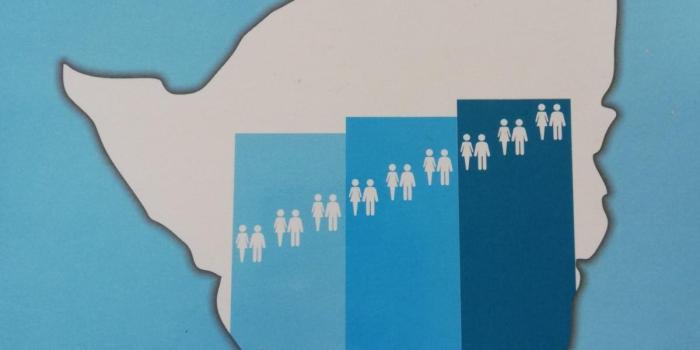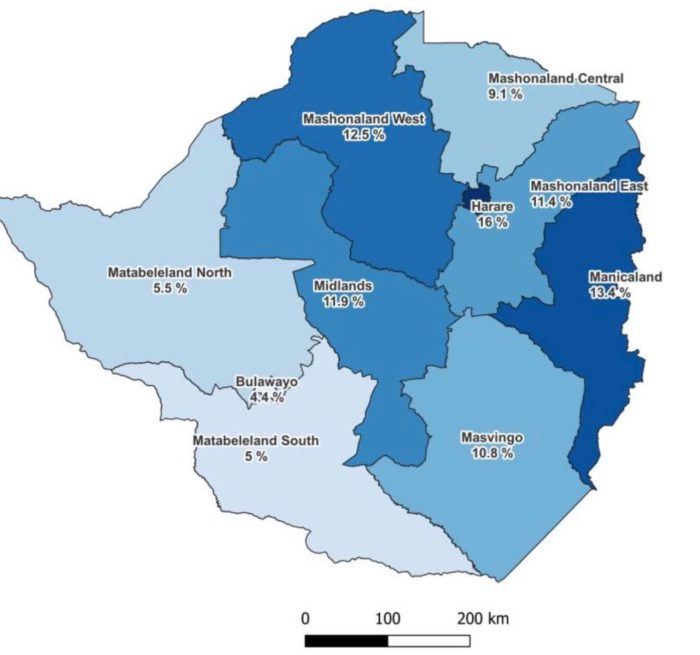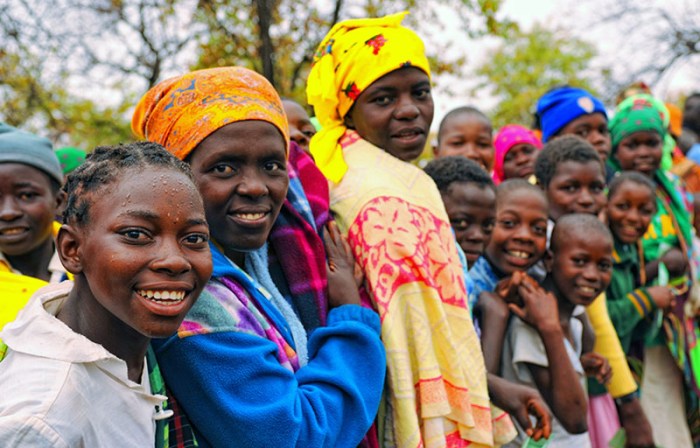In 2003 the population of zimbabwe was about 12.6 million – In 2003, Zimbabwe’s population was estimated to be approximately 12.6 million, marking a significant milestone in the country’s demographic history. This figure, derived from meticulous data collection and analysis, provides valuable insights into the nation’s population dynamics, socioeconomic conditions, and future prospects.
The population of Zimbabwe has undergone a complex and multifaceted evolution, shaped by a confluence of factors including birth rates, mortality rates, migration patterns, and economic circumstances. Understanding the population dynamics of Zimbabwe in 2003 requires a comprehensive examination of these factors and their interplay.
Historical Population Overview: In 2003 The Population Of Zimbabwe Was About 12.6 Million

Zimbabwe’s population has experienced significant changes over time. In the decades leading up to 2003, the country experienced a steady increase in population growth, primarily due to high birth rates and a decline in mortality rates. However, economic instability, political turmoil, and the HIV/AIDS epidemic began to impact population growth in the late 1990s and early 2000s.
Factors Contributing to Population Changes
- High birth rates: Zimbabwe’s fertility rate was relatively high in 2003, with an average of 4.6 children per woman.
- Declining mortality rates: Improvements in healthcare and sanitation contributed to a decline in mortality rates, particularly among infants and children.
- Migration: Internal migration from rural to urban areas was significant, driven by economic opportunities and access to services.
Demographic Characteristics

Age Distribution
In 2003, Zimbabwe’s population was relatively young, with a median age of 19.4 years. The population pyramid showed a broad base, indicating a high proportion of children and young adults.
Gender Ratio
The gender ratio in Zimbabwe was slightly skewed towards females, with approximately 98 males per 100 females.
Ethnic Composition
The majority of Zimbabwe’s population in 2003 was of Bantu origin, with the Shona and Ndebele being the largest ethnic groups. Other ethnic groups included the Tonga, Kalanga, and Venda.
Economic Context
Zimbabwe’s economy was facing significant challenges in 2003. The country experienced high inflation, unemployment, and political instability. These economic factors had a negative impact on population growth and distribution.
Impact on Population Growth
- Economic instability and unemployment led to a decline in birth rates as families struggled to provide for their children.
- Inflation and poverty made it difficult for families to access healthcare, leading to an increase in mortality rates.
Impact on Population Distribution
- Economic opportunities in urban areas attracted migrants from rural areas, leading to increased urbanization.
- Political instability and violence in certain areas forced people to relocate to safer regions.
Urbanization and Rural Distribution
In 2003, Zimbabwe had a relatively high urbanization rate of approximately 38%. The capital city, Harare, was the largest urban center, followed by Bulawayo, Mutare, and Gweru.
Factors Influencing Urbanization, In 2003 the population of zimbabwe was about 12.6 million
- Job opportunities: Urban areas offered more employment opportunities, particularly in the manufacturing and service sectors.
- Education: Urban areas provided better access to educational institutions, attracting young people seeking higher education.
- Infrastructure: Urban areas had better infrastructure, including transportation, healthcare, and sanitation, which made them more desirable places to live.
Health and Mortality
Zimbabwe’s health status in 2003 was affected by a number of factors, including poverty, limited access to healthcare, and the HIV/AIDS epidemic.
Life Expectancy
Life expectancy in Zimbabwe was relatively low in 2003, with an average of 43.5 years for males and 46.4 years for females.
Infant Mortality
Infant mortality rates were high, with an estimated 60 deaths per 1,000 live births.
Common Diseases
The most common diseases in Zimbabwe in 2003 included HIV/AIDS, malaria, tuberculosis, and diarrheal diseases.
Education and Literacy
Zimbabwe had a relatively high literacy rate in 2003, with approximately 86% of the population being literate.
Literacy Rates
- The literacy rate was higher among females (88%) than males (84%).
- Literacy rates varied across regions, with urban areas having higher literacy rates than rural areas.
Educational Attainment
- The majority of Zimbabweans had completed primary education (85%).
- A significant proportion of the population had also completed secondary education (42%).
- The number of university graduates was relatively small (5%).
Impact on Population Growth
Education has a positive impact on population growth by reducing fertility rates. Educated women tend to have fewer children, as they have better access to family planning services and are more likely to be employed.
Migration Patterns

Rural-to-Urban Migration
Rural-to-urban migration was a significant trend in Zimbabwe in 2003. People moved to urban areas in search of better economic opportunities, education, and healthcare.
International Migration
Zimbabwe also experienced international migration, with many people moving to neighboring countries such as South Africa and Botswana.
Factors Driving Migration
- Economic opportunities: Migration to urban areas and neighboring countries was driven by the search for better job opportunities and higher wages.
- Political instability: Political violence and economic instability in Zimbabwe forced many people to seek refuge in neighboring countries.
- Environmental factors: Drought and other environmental challenges also contributed to migration, particularly from rural areas.
General Inquiries
What were the major factors contributing to Zimbabwe’s population growth in 2003?
Zimbabwe’s population growth in 2003 was primarily driven by a combination of high birth rates and declining mortality rates. Improved healthcare infrastructure and access to medical care contributed to a reduction in infant mortality and an increase in life expectancy.
How did economic conditions in Zimbabwe in 2003 impact population growth and distribution?
The economic situation in Zimbabwe in 2003, characterized by high inflation and unemployment, had a significant impact on population distribution. Urbanization rates increased as people sought economic opportunities in cities, while rural areas experienced population decline due to limited job prospects.
What were the key demographic characteristics of Zimbabwe’s population in 2003?
In 2003, Zimbabwe’s population was predominantly young, with a median age of around 19 years. The gender ratio was relatively balanced, with slightly more males than females. The population was also ethnically diverse, with the Shona and Ndebele being the largest ethnic groups.